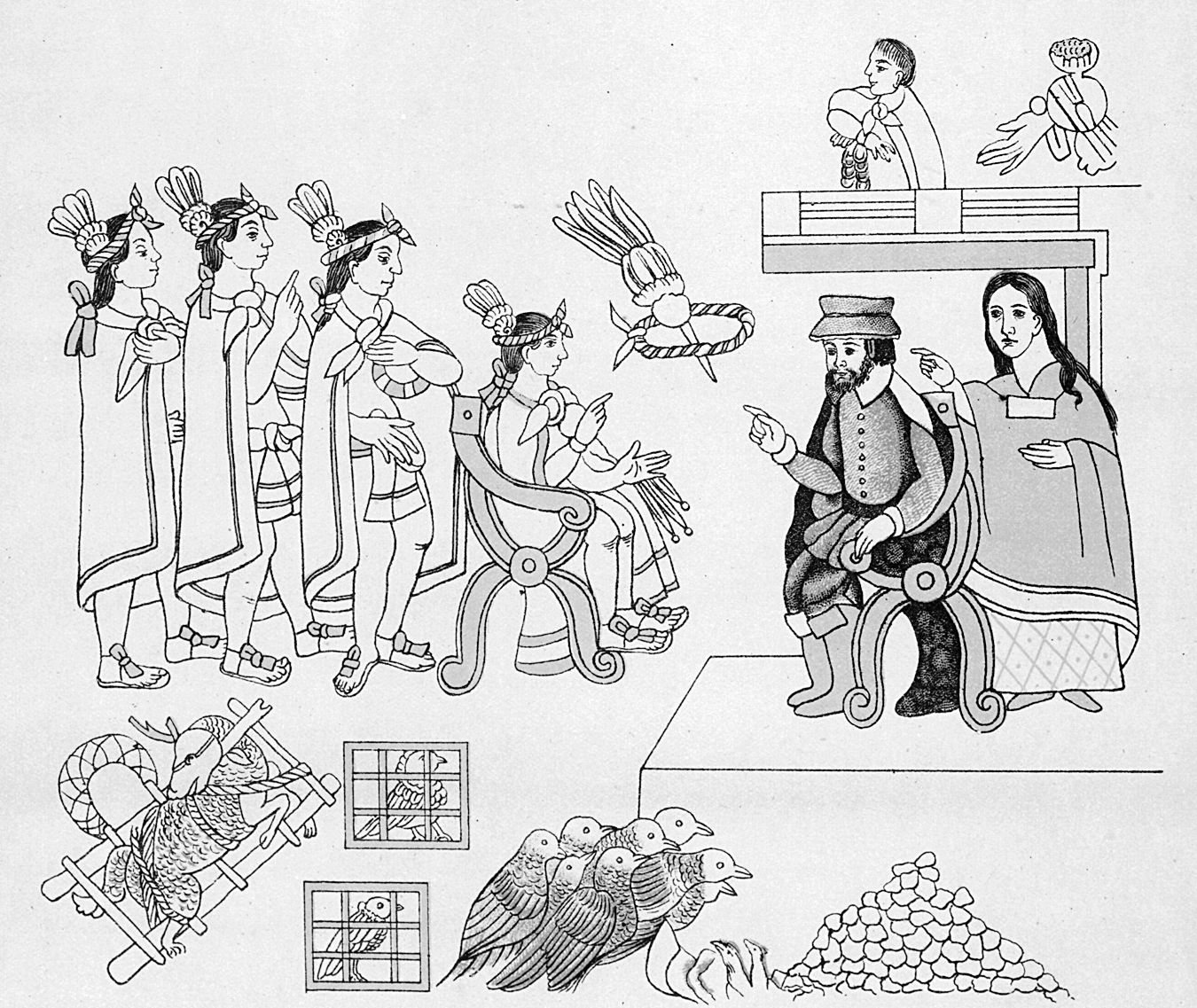2. Illustrating a Native Perspective
Printed Page 20
Lienzo de Tlaxcala (c. 1560)
Like Bernal Díaz del Castillo, the peoples of central Mexico had a stake in recording the momentous events unfolding around them, for they had long believed that remembering the past was essential to their cultural survival. Traditionally, local peoples used pictoriographic representations to record legends, myths, and historical events. After the Spaniards’ arrival, indigenous artists borrowed from this tradition to produce their own accounts of the conquest, including the image below. It is one of a series contained in the Lienzo de Tlaxcala, painted on cloth in the mid-sixteenth century. Apparently, the Lienzo was created for the Spanish viceroy to commemorate the alliance of the Tlaxcalans with the Spaniards. The Tlaxcalans were enemies of the Aztecs and after initial resistance to the Spanish invasion decided to join their forces. This particular image depicts two related events. The first is the meeting between the Aztec leader Moctezuma and Hernán Cortés in Tenochtitlán in August 1519. Cortés is accompanied by Doña Marina, his translator and cultural mediator; Moctezuma appears with warriors at his side. Rather than showing Moctezuma in his traditional garb, the artist dressed him in the manner of the Tlaxcalans. Both sit in European-style chairs, a nod to European artistic influence, and a Tlaxcalan headdress is suspended in the air between them. Game and fowl offered to the Spaniards are portrayed at the bottom. Within a week of this meeting, Cortés imprisoned Moctezuma in his own palaces with the Tlaxcalans’ help. Moctezuma the prisoner appears in the upper right of the image as an old, weak ruler whose sun has set.

DISCUSSION QUESTIONS
- In what ways do the artist’s depictions of Cortés and Moctezuma differ? In what ways are they the same?
Question
In what ways do the artist’s depictions of Cortés and Moctezuma differ? In what ways are they the same?
accept_blank_answers: true
points: 10In what ways do the artist’s depictions of Cortés and Moctezuma differ? In what ways are they the same? - Why do you think the artist chose to depict Moctezuma in Tlaxcalan dress? How was this choice related to the artist’s audience and the message he sought to convey?
Question
Why do you think the artist chose to depict Moctezuma in Tlaxcalan dress? How was this choice related to the artist’s audience and the message he sought to convey?
accept_blank_answers: true
points: 10Why do you think the artist chose to depict Moctezuma in Tlaxcalan dress? How was this choice related to the artist’s audience and the message he sought to convey? - What are the possible strengths and weaknesses of using pictures to record and convey information?
Question
What are the possible strengths and weaknesses of using pictures to record and convey information?
accept_blank_answers: true
points: 10What are the possible strengths and weaknesses of using pictures to record and convey information?